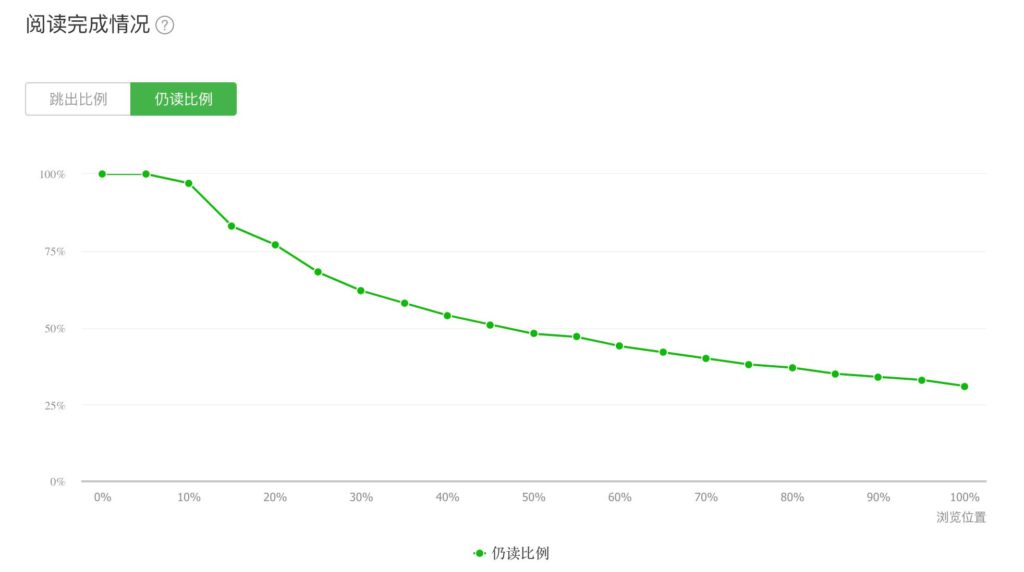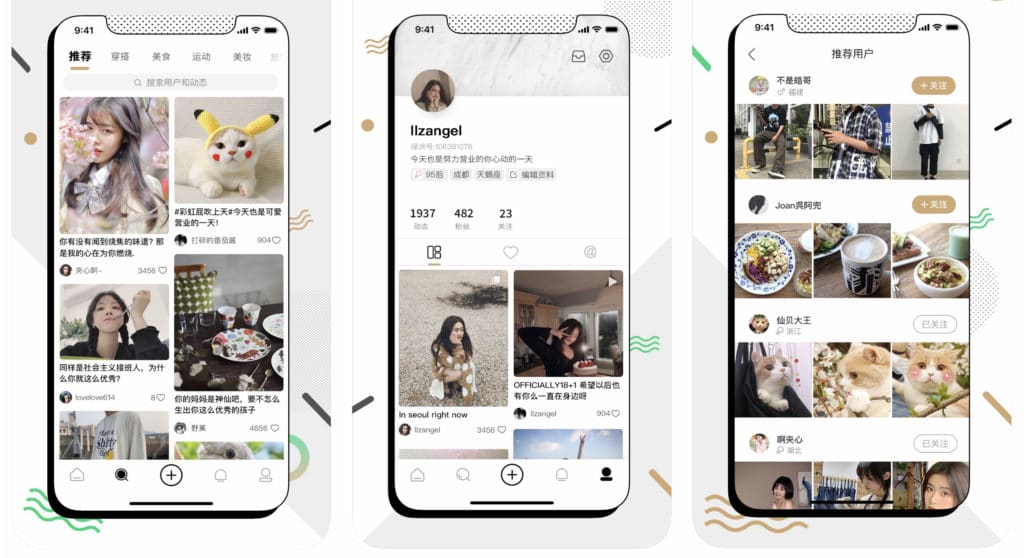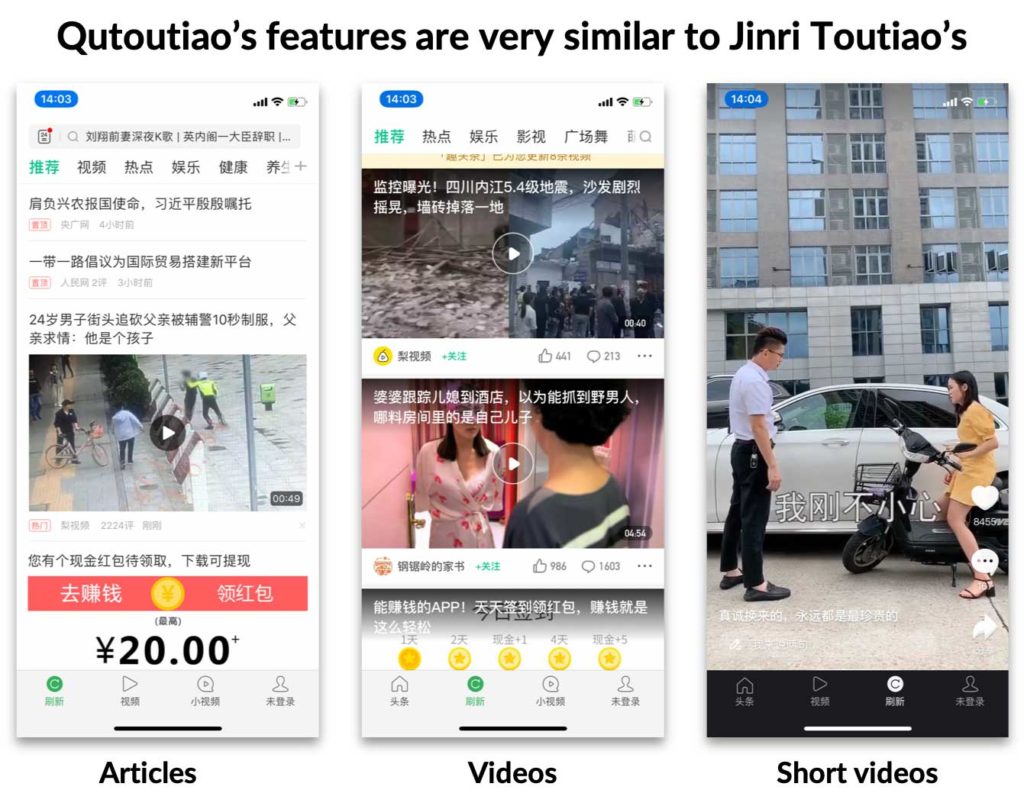WeChat improves analytics back-end with “heat map” function
Heat map
WeChat added a “heat map” function to the analytics back-end which indicates how far users have read WeChat articles.
For instance, in the graph below, only 10% of readers read more than 90% of the article, while 50% of them read the article halfway.

This feature enables marketers to go beyond clicks and re-shares. For instance, it allows admins to identify a poorly performing article that only gets reads by leveraging clickbait.
The feature is also useful to identify interesting articles in sectors such as B2B where sharing rate is low. B2B users might read an article through to the end, but not want to share it on their WeChat Moments.
To access the feature:
- On the WeChat Official Account back-end, click “内容分析”
- Click “单篇群发”
- Click on the article for which you would like to see a heatmap
- Scroll down to the “数据趋势” section
Top follower analytics
WeChat also added Top Follower Analytics to the WeChat Official Accounts backend.
The top followers are defined as the users who have your Official Account as one of the 12 most-read Official Accounts on the top of their Subscription Account folder.

The new analytics system now enables you to view these top followers’ demographic information, including the number of top followers, gender, age, city, and operating system.
The top follower analytics is a more accurate measurement of your real “active” followers compared to the overall follower analytics. Especially since subscription accounts usually have a lot of “ghost followers” who never read articles. Now you can focus on the most active user group to fine-tune your content.
To access the feature:
- On the WeChat Official Account back-end, click “用户分析”
- Click the “常读用户分析” tab
According to the NewRank Top 500 WeChat Official Account report of August 2019, the average percentage of active users is 11%. Comparatively, the average top article open rate is 4.3%; and almost half of the users would finish reading 100% of the article.
Weibo’s Instagram copycat went viral
Weibo launched on the 2nd of September an Instagram “copycat” (the two Apps actually look strikingly similar) called Oasis (绿洲).
However, the App was taken off the store due to copyright infringement. It was pointed out that the logo resembled that a South Korean design firm, Studio Fnt, created for the country’s Ulju Mountain Film Festival in 2015. Weibo delisted the App to avoid copyright issues.

This setback is untimely for Weibo, as the new App was gaining traction. Moreover, Weibo revenues have been stagnating over the second quarter of 2019.
The App was relisted on the App Store after changing the logo, but the temporary delisting might have affected its initial momentum.
Toutiao’s competitor Qutoutiao grows 250% YOY to 119.3M MAU’s
It is well known that Toutiao and Douyin are stealing market share from older content platforms such as WeChat and Weibo.
Toutiao also has to deal with newer entrants in the market: Qutoutiao is one of these. The company was launched in 2016, 4 years after Toutiao. Yet, it already claims almost 120 million Monthly Active Users (MAU’s), a 250% YOY growth.
The net revenues of the platform also increased 187.9% YOY to 1,385.9 million RMB, mostly led by advertising.
The platform is very similar to ByteDance’s product, Jinri Toutiao. It combines news article, videos, and Douyin-style short videos.

The platform sustained its growth by providing cash incentives to users to share and consume content. Watching more content and share with friends gives additional credits to take part in a lucky draw on the platform.

The platform is, however, fuelling this growth at the expense of considerable losses. Net losses increased to 561.3 million RMB in Q2 2018, a 265% YOY increase. Qutoutiao’s losses are therefore growing faster than both its revenues and its MAU’s.

